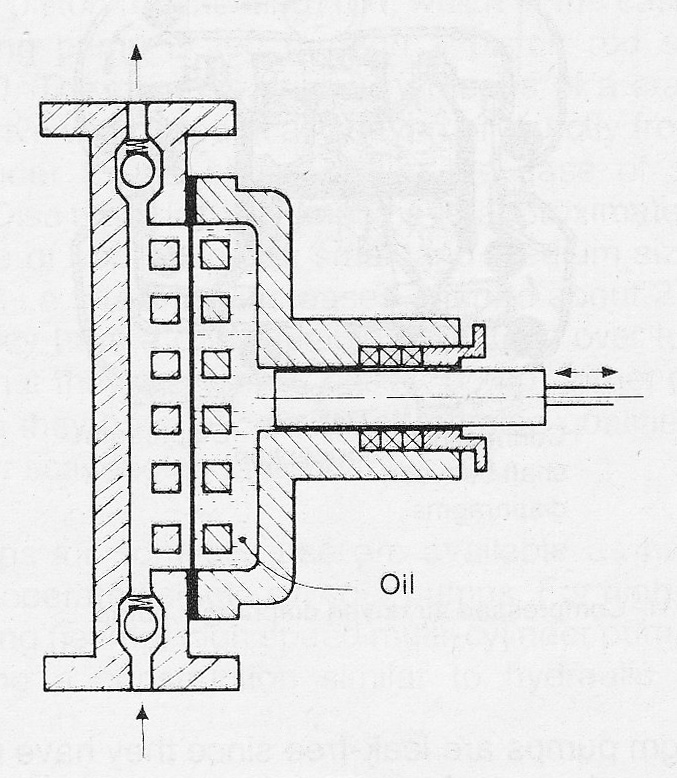3.4.16 Dosing pump
Dosing pump
The purpose of a dosing pump is to add a defined volume of liquid to a process. The volume is controlled by adjusting rotational speed, number of reciprocal strokes and stroke length depending on the pump design. Dosing pumps are also known as Metering pumps or proportioning pumps.
Certain processes require the dosing of small quantities of fluid to a larger fluid flow. Figure 3.416a shows examples of this type of process requirement.
Pressure (MPa) | Flow (l/h) | Temp ( °C ) | Liquid | Process | Problem |
0,5 | 300 | room | Hyporocloric acid | Water preparation | Corrosion |
0,5 | 1 | room | Mercury | Chemical | High density |
0,5 | 500 | 500 | Lead | Metallurgical | Themperature |
1 | 10 | 120 | Sodium | Chemical | Explosive |
1 | 100 | room | Plutonium salt | Atomic fuel recovery | Radio - active |
1 | 20000 | room | Sugar solution | Drink manufacture | Sterility |
10 | 200 | room | Tungsten carbided suspensions | Spray drying | Wear |
20 | 1500 | -30 | Chlorine | Chlorination | Poisonous |
30 | 500 | -200 | Oxygen | Chemical | Low temp |
50 | 1000 | room | Vinyl acetate | Chemical | High pressure |
300 | 30 | room | Catalyst | Polyethelyne manufacture | High pressure |
The functions which are thus required of dosing pumps consist of:
- Energy increase
- Feed
- Regulation and control
The feed function of a metering pump is indirectly determined by the choice of pump construction whose volume is independent of back-pressure, i.e. displacement pumps, usually piston, piston diaphragm, diaphragm or peristaltic type.
The volume flow rate is thus varied by means of varying the stroke length, see figure 3.416b or by varying the speed.
Figure 3.416b Piston type dosing pump with variable stroke length. Raising or lowering the “Z”-shaped crankshaft changes the length of the stroke.

When it is required to meter several different fluids to the main flow it may be convenient to combine several pump elements together. For regularly repeated doses the recipe was recorded on punched cards in the past, to enable numerical control by means of electronic circuits. Today, accurate control is made possible by Interfaces integrating the pumps into a fully automated processes with built in microprocessor technology and sophisticated monitoring functions ensuring reliability in operations and minimum of chemical waste.
The construction of dosing pumps for moderately aggressive media is illustrated in figure 3.416c.

For higher pressure an intermediate liquid, oil for example, is introduced and acts against a diaphragm, so called diaphragm or piston diaphragm dosing pumps. The movement of the diaphragm being limited by supporting walls with slots on each side of the diaphragm.

.
Figure 3.416d dosing pump for high pressure or strongly corrosive
media (leak-free)
